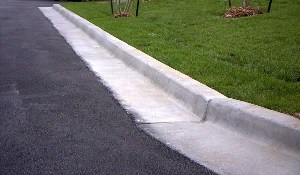
Figure 1 - Concrete curb & gutter along edge of driveway
Although in many cases the curb and gutter are formed as one unit, as shown in Figure 1, each provides it own benefits, with some of the benefits overlapping.

Figure 2 - Using a twin drum roller to compact the driveway foundation layer

Figure 3 - Driveway foundation material being compacted without a curb

Figure 4 - Driveway foundation material being compacted with a curb
Compaction:
A properly constructed driveway foundation for an asphalt surfaced requires that the base be heavily compacted. This is usually done using mechanized rollers, as shown in Figure 2. If the foundation edges are not confined, it is difficult, if not impossible to compact the edges properly as the base wants to spread out as it is being compacted. By installing curbs, the base is confined and hence will compact properly.
Figure 3 shows weight being applied to the edge of the foundation layer to provide compaction. The red arrow shows the direction of the weight and the blue arrows show the direction of movement of the foundation materials.
Figure 4 shows the same compaction to the foundation layer and the resulting direction of earth movement if a curb is installed.
The exact same situation applies to the asphalt surface. It is necessary that the asphalt be compacted and if the edges of the asphalt are not confined the asphalt will spread out rather than being tightly compacted.
A driveway that has a well compacted foundation and asphalt surface layer is less likely to crack under the loads applied by the weight of vehicles driving over it.
Drainage:
Driveways must be sloped to provide drainage for rainwater. However, even a properly sloped driveway will have some rainwater running over the sides of the driveway and this coupled with rainwater landing on the landscaping adjacent to the driveway will have water penetrating the foundation layer.
Curbs and gutters provide a channel and direction for rainwater and prevent the rainwater from penetrating and saturating the foundation layer.
Water causes foundations to heave, especially in geographic areas that are subjected to freezing temperatures. Water penetrating the asphalt surface layer causes potholes to form.
Additional information on the causes and repair of potholes.
Functionality:
The use of curbs and gutters protects the edge of the asphalt from damage due to vehicle loads. Vehicles driving and/or parking to close to the edge of an asphalt driveway will cause the edges to buckle under the weight.
The curb holds the asphalt pavement in place, even if a vehicle drives or parks on the edge of the asphalt surface. Secondarily, the gutter and/or curb define the surface of the driveway and as a general statement individuals will not drive as close to the edge of a driveway that has a curb.
In areas that are subjected to snowfall, curbs define a clear snow removal area, preventing damage to adjoining landscaping.
Landscaping on both sides of a driveway with curbs is better defined. Grass can be easily trimmed, mulch and other landscape fill materials will not end up on driveway surfaces.
Driveway lighting is somewhat protected from potential vehicle damage when placed on the landscape side of the curb, as the curb offers a physical barrier.
Curb Appeal:
A driveway with curbs is cleaner and neater than a driveway which has no defining elements. This feature alone, makes a driveway with curbs much more visually appealing.
Summary:
By adding a curb and/or gutter you will increase the ability for proper compaction of both the foundation and the surface layer of asphalt. You will be providing better drainage for the driveway. You will lessen possible damage to edges by vehicles.
This will dramatically extend the life of your asphalt driveway and increase the curb appeal of your home.
